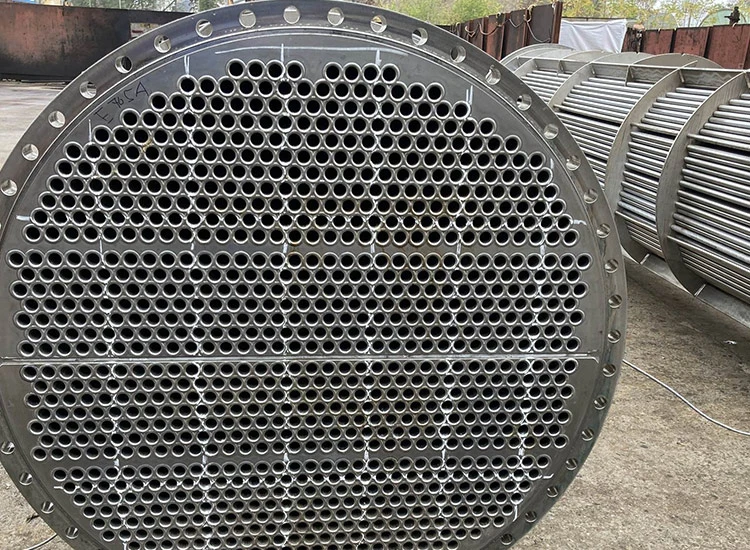ec-works performs eddy current inspections of heat exchanger tubing on a wide variety of systems including condensers, reactors, cooling devices, heat exchangersand air coolers with a diversity of common tube dimensions, shapes and materials as titanium, brass, various copper-nickel-grades, stainless steels, duplex-grades etc.

ec-works provides:
ec-works is able to perform an eddy current tube inspection with an automatic signal evaluation tool to support our operators in the process of analyzing signals. Our modern technology enhances result detection and precision - an additional guaranty for satisfactory quality.
ec-works has developed several rotating tools to increase the sensitivity of the eddy current tube inspection. E.g. applications for the regularly untested tube sheet area are on stock. We've also designed and manufactured probe systems developed to detect very small volume defects like needle-shaped holes causing steam erosion in titanium tubes located in condenser systems. Our company is highly dedicated towards working on the continual development and improvement of our profession.
What makes ec-works special?
We offer special eddy current inspections for ferromagnetic tube materials especially the PSEC technology. The Partial Saturated Eddy Current inspection method is useful to detect and evaluate small volume defects like pitting corrosion. PSEC is the only inductive method to inspect finned tubes as common in air cooler systems and is truly efficient when wanting to detect inner and outer defects. Interpreting PSCE eddy current signals is linked with a great amount of knowledge, skill and experience - a performance which our trained operators deliver reliably.
Another option is the Remote Field Eddy Current method, It is a common method performed on ferromagnetic tubes.
ec-works combines these inspection technologies for its C-Steel-tubing inspections in special cases with the IRIS technology as a verification tool. IRIS is very precise in tube wall thickness measurements, but requires a perfect cleaning of the tubes and is weak in any kind of crack detection and for the detection of small defects.

Please find attached a documentation of a heat exchanger inspection and our flyer regarding our saturated eddy current Technology.
The testing of ferro-magnetic materials represents the “top class” of pipe testing due to the special material properties (permeability fluctuations). Based on our decades of experience and continuous development, we can offer our customers quick and safe testing of carbon steel pipes. Duplex or nickel pipes can also be easily tested.
Incidentally, the now internationally used abbreviation for this process, “PSEC” (Partial Saturated Eddy Current), came from us.
